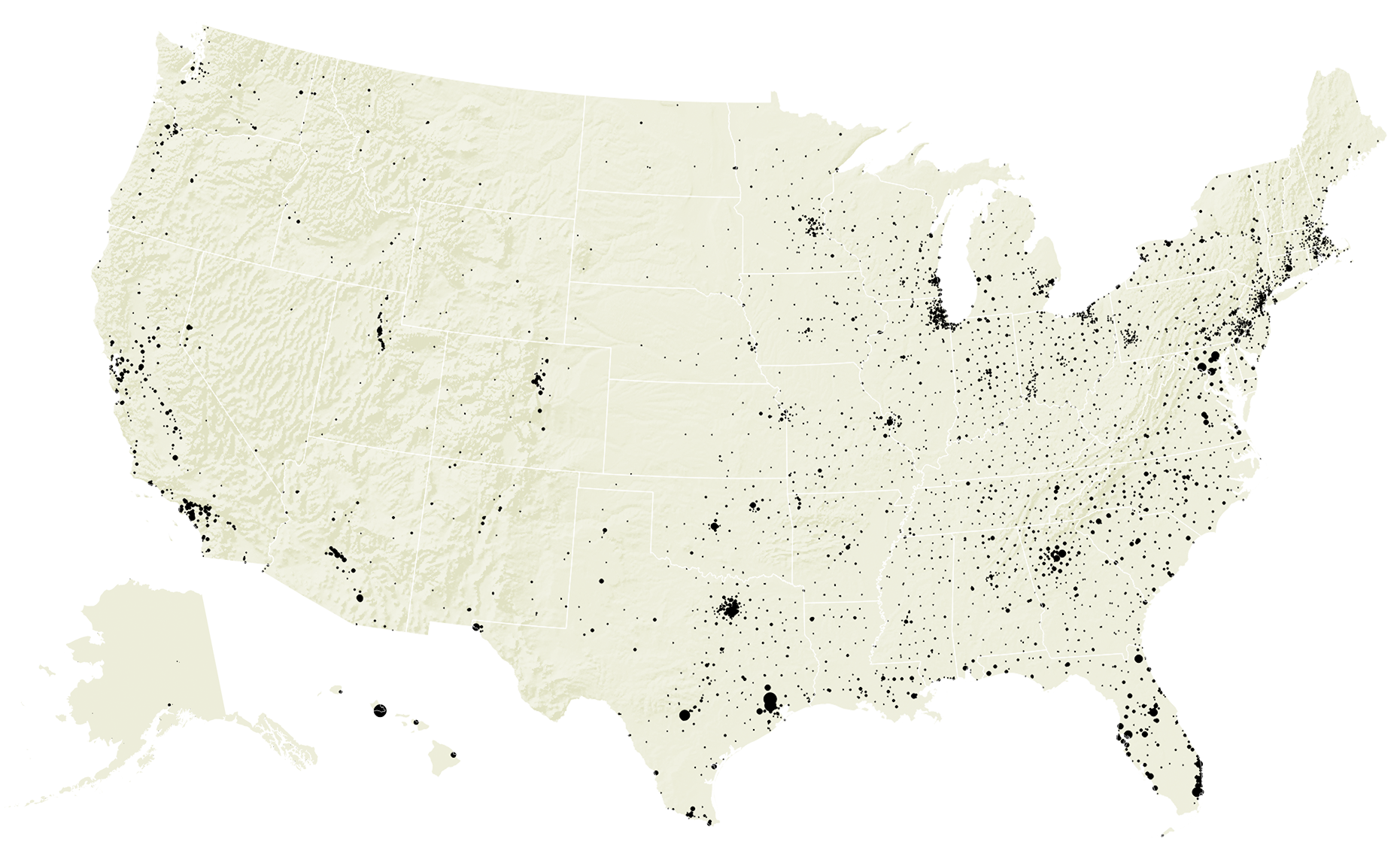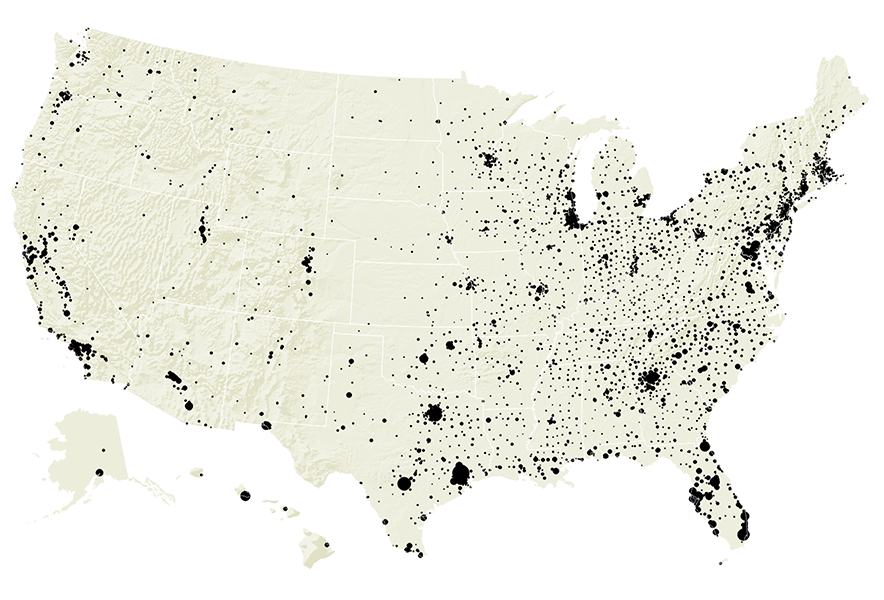This Is Where Hate Crimes Don’t Get Reported

Population


On Monday, the FBI released its latest tally of hate crimes in the U.S. Despite a 1990 law that mandates data collection on hate crimes, the FBI’s count remains only a fraction of what an annual national crime victims survey estimates the real number to be.
The above map shows some of the gaps that remain in the data. It marks every law enforcement agency serving at least 10,000 residents that failed to report at all in 2016, that reported zero hate crimes, or that reported fewer than one hate crime per 100,000 residents.
ProPublica’s reporting has shown that local jurisdictions often fail to properly recognize, investigate or prosecute hate crimes, and thus do not report them to the FBI.
So what else do we know about what we don’t know?
Location Matters: Compliance in States Varies Widely
The number of hate crimes reported in some states is far fewer than would be be expected given the size of their populations.
Take Florida, for example. It is the third most populous state but it reported fewer hate crimes than North Carolina, a state with half as many people. The 15 Florida law enforcement agencies with the most populous jurisdictions -- which together cover 40 percent of the state’s residents -- reported just 19 hate crimes in 2016 combined. By comparison, the Charlotte-Mecklenburg Police Department in North Carolina, which serves a community one-tenth as large, reported 27.
Below, each state is ranked by its size, represented by the bar in light blue, with the number of hate crimes overlaid in dark blue.
Hate Crimes Reported by State, 2016
Larger Agencies Are More Likely to Report at Least One Hate Crime
There is one factor that seems to predict whether a jurisdiction will report at least one hate crime. Agencies that serve larger communities are more likely to do so than agencies that serve smaller ones.
That isn’t necessarily so for all large communities -- Harris County, Texas, and Prince George’s County, Maryland both reported zero hate crimes in 2016. But large places do make up the bulk of hate crimes reported to the FBI.
To some extent, this is intuitive: Larger cities have more crime in general and they have bigger law enforcement agencies, some of which can have dedicated hate crimes specialists. Smaller places are much less likely to report even one incident, and more likely to not send in paperwork to the FBI at all.
Agencies’ reporting pattern, by agency size, 2007-2016
Here Are the 100 Largest Law Enforcement Agencies That Reported Zero or Very Few Hate Crimes in 2016 — or Didn’t Report at All
These law enforcement agencies serve some of America’s largest jurisdictions, but failed to submit hate crimes paperwork to the FBI, reported that they had no hate crimes at all, or reported fewer than one hate crime per 100,000 residents they police.
The lack of solid facts makes understanding the scope of hate incidents difficult. Since the presidential election last year, we’ve been collecting people’s stories of hate crimes and bias incidents. If you’ve been a victim of bias-motivated harassment or violence, or if you’ve witnessed something and want to tell your story, let us know.
Additional design and development by Al Shaw and Rob Weychert